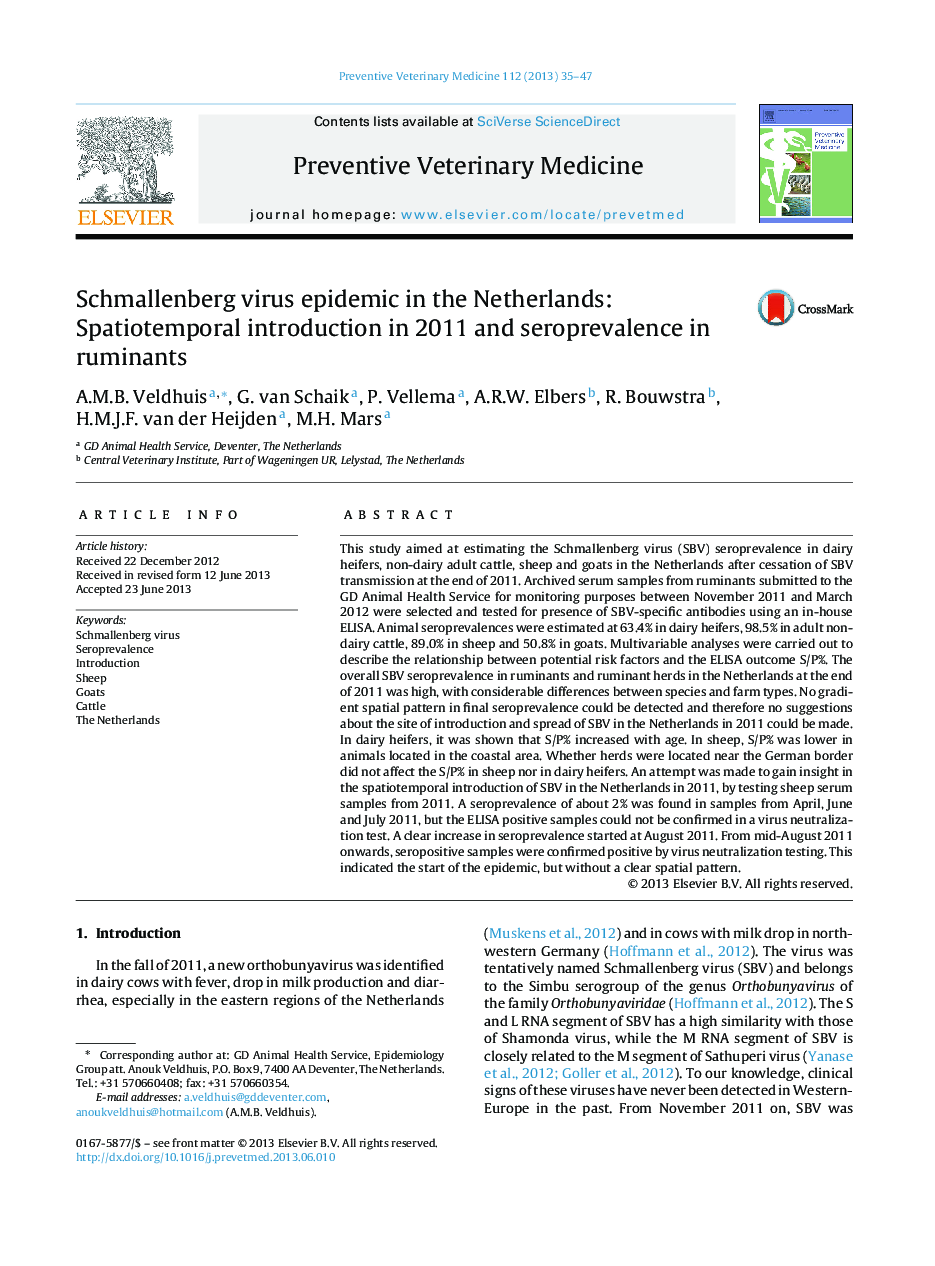| کد مقاله | کد نشریه | سال انتشار | مقاله انگلیسی | نسخه تمام متن |
|---|---|---|---|---|
| 5793741 | 1554179 | 2013 | 13 صفحه PDF | دانلود رایگان |

This study aimed at estimating the Schmallenberg virus (SBV) seroprevalence in dairy heifers, non-dairy adult cattle, sheep and goats in the Netherlands after cessation of SBV transmission at the end of 2011. Archived serum samples from ruminants submitted to the GD Animal Health Service for monitoring purposes between November 2011 and March 2012 were selected and tested for presence of SBV-specific antibodies using an in-house ELISA. Animal seroprevalences were estimated at 63.4% in dairy heifers, 98.5% in adult non-dairy cattle, 89.0% in sheep and 50.8% in goats. Multivariable analyses were carried out to describe the relationship between potential risk factors and the ELISA outcome S/P%. The overall SBV seroprevalence in ruminants and ruminant herds in the Netherlands at the end of 2011 was high, with considerable differences between species and farm types. No gradient spatial pattern in final seroprevalence could be detected and therefore no suggestions about the site of introduction and spread of SBV in the Netherlands in 2011 could be made. In dairy heifers, it was shown that S/P% increased with age. In sheep, S/P% was lower in animals located in the coastal area. Whether herds were located near the German border did not affect the S/P% in sheep nor in dairy heifers. An attempt was made to gain insight in the spatiotemporal introduction of SBV in the Netherlands in 2011, by testing sheep serum samples from 2011. A seroprevalence of about 2% was found in samples from April, June and July 2011, but the ELISA positive samples could not be confirmed in a virus neutralization test. A clear increase in seroprevalence started at August 2011. From mid-August 2011 onwards, seropositive samples were confirmed positive by virus neutralization testing. This indicated the start of the epidemic, but without a clear spatial pattern.
Journal: Preventive Veterinary Medicine - Volume 112, Issues 1â2, 1 October 2013, Pages 35-47